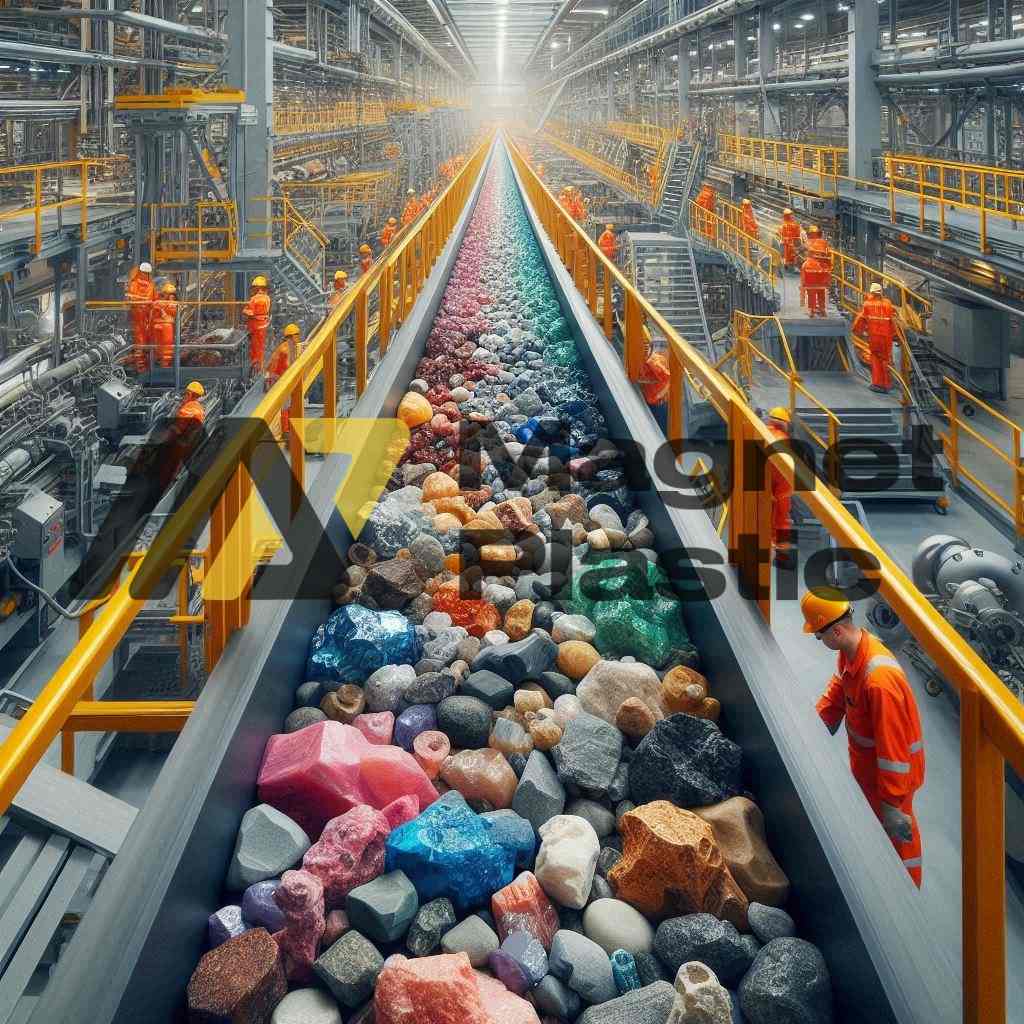Magnetic Separation in Mineral Processing
Magnetic separation has become a fundamental technology in mineral processing, revolutionizing modern mining by effectively improving the recovery of valuable minerals. In an environment where demand for mineral resources is constantly increasing and deposits are becoming more complex, magnetic separation in mineral processing is key to maximizing operational efficiency and reducing environmental impact.
How Does Magnetic Separation Work in Mineral Processing?
Magnetic separation in mineral processing is based on the application of a magnetic field to extract ferrous minerals and other components with magnetic properties. This process allows minerals such as magnetite and hematite to be isolated from other materials, improving the purity of the extracted resources. Magnetic minerals are attracted by the magnetic field to a surface or to a separate material stream, while non-magnetic materials continue in the production flow and are discarded.
This separation system can be adapted to various processing phases, from pre-concentration to the final stages, and is particularly effective in mining plants seeking to optimize the recovery of valuable minerals and remove impurities. The main types of magnetic separators include:
Low Intensity Separators (LIMS): Used for highly magnetic minerals, such as magnetite, these devices operate with a low intensity field and are usually applied in the early stages of processing.
High Intensity Separators (HIMS): Effective for separating minerals with weaker magnetic properties, such as hematite, these separators are ideal for minerals that require a thorough selection process.
Applications of Magnetic Separation in Mineral Processing
Magnetic separation in mineral processing offers multiple applications that optimize performance and costs at various stages of the mining process:
Preconcentration of Ferrous Minerals: This technique allows iron minerals to be concentrated, reducing the volume of material that passes to later stages. This saves time and energy, as well as reducing production costs.
Impurity Removal: In the case of non-ferrous minerals, such as copper or gold, magnetic separation helps to extract metallic impurities that could affect final quality. This results in purer minerals, minimizing the need for additional treatments.
Recovery of Minerals in Tailings: Magnetic separation technology facilitates the recovery of valuable minerals remaining in tailings or waste, which improves profitability and allows for reduced waste.
Benefits of Magnetic Separation in Mining
Incorporating magnetic separation in mineral processing provides numerous advantages to mining operations, such as:
Increased Efficiency: Magnetic separation allows specific minerals to be extracted selectively, increasing efficiency at each processing phase and improving plant performance.
Cost Reduction: By concentrating minerals at early stages, processing costs at advanced stages are reduced, including transportation and energy costs.
Sustainability and Reduction of Environmental Impact: Being a chemical-free technology, magnetic separation minimizes environmental impact compared to other methods. In addition, the recovery of minerals in tailings contributes to more sustainable mining.
Protection of Processing Equipment: By extracting unwanted metals before the final stages, wear and tear on machinery is avoided, reducing maintenance costs and prolonging the life of equipment.
Challenges of Implementing Magnetic Separation
Despite the benefits of magnetic separation in mineral processing, its implementation can present challenges. The correct choice of separation systems is essential to ensure process efficiency. In addition, the initial investment in equipment and maintenance can be high, so it is essential to evaluate the viability of the technology according to the specific characteristics of the deposit and production objectives.
Conclusion
Magnetic separation in mineral processing is an advanced and adaptable solution that allows the mining industry to operate more efficiently and sustainably. The possibility of optimizing mineral recovery and reducing waste makes this technology a key option for a mining industry of the future that is more aware of its environmental impact. Magnetic separation not only facilitates the improvement of the quality of the extracted minerals, but also ensures a more profitable and environmentally friendly mining industry.
